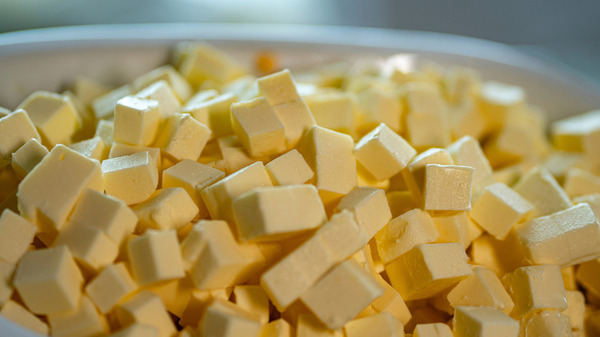Butter is a staple ingredient in many kitchens, but sometimes you may find yourself with more butter than you can use before it expires. The good news is that butter freezes exceptionally well, making it easy to preserve for future use. In this guide, we’ll explore whether you can freeze butter, the best ways to do so, and tips for thawing and using it effectively.
Can You Freeze Butter?
Yes, butter can be frozen, and it freezes beautifully without significant changes to its flavor or texture. Whether salted or unsalted, butter maintains its quality in the freezer, making it an excellent candidate for long-term storage.
Why Freeze Butter?
Freezing butter is a great option if:
- You’ve bought butter in bulk or found it on sale.
- You want to preserve butter for holiday baking or other seasonal needs.
- You don’t use butter frequently and want to extend its shelf life.
How to Freeze Butter
Freezing butter is straightforward, but following these steps ensures it stays fresh and flavorful:
- Check Packaging
- Store-bought butter typically comes wrapped in foil or wax paper and placed in a cardboard box. This packaging is freezer-safe, but you can add an extra layer to prevent freezer burn.
- For butter that isn’t pre-packaged (e.g., homemade or bulk-purchased), wrap it tightly in plastic wrap or aluminum foil.
- Divide into Portions
- If you don’t plan to use a whole stick of butter at once, consider dividing it into smaller portions. Cut the butter into tablespoon-sized pieces or portions that suit your cooking and baking needs.
- Use Airtight Storage
- Place the wrapped butter or portions in an airtight freezer bag or container. Remove as much air as possible to minimize exposure to moisture and odors.
- Label and Date
- Label the package with the freezing date to keep track of how long the butter has been stored.
- Freeze Quickly
- Place the butter in the coldest part of your freezer (typically the back) to freeze it quickly and maintain its quality.
How Long Can Butter Be Frozen?
- Salted Butter: Can be frozen for up to 12 months without losing quality.
- Unsalted Butter: Best used within 6 months, as it’s more prone to absorbing odors and losing freshness over time.
Thawing Frozen Butter
Thawing butter is simple, and you can choose a method based on how quickly you need it:
- Refrigerator Thawing
- Transfer the butter from the freezer to the refrigerator and let it thaw slowly. This process takes about 4-6 hours for a stick of butter.
- Countertop Thawing
- For quicker results, place the butter on the counter at room temperature. A stick of butter will thaw in about 30-60 minutes, depending on the room temperature.
- Use Directly from Frozen
- For baking, you can often use frozen butter directly, especially if the recipe calls for cold or grated butter (e.g., in pie crusts or scones).
Tips for Freezing Butter
- Choose Salted Butter for Longer Storage
Salted butter has a longer freezer life due to the preservative properties of salt. - Avoid Freezer Odors
Butter can absorb odors from the freezer. Double-wrap it or store it in a container to prevent this. - Freeze Whipped Butter Separately
If you use whipped or flavored butter, freeze it in small, portioned containers for easier use later. - Grate Butter for Baking
For recipes requiring cold butter, grate it while frozen. It’s easier to incorporate into doughs and batters this way.
Using Frozen Butter
Frozen butter can be used in various ways, including:
- Baking
- Thawed butter works perfectly in cakes, cookies, and pastries.
- For pie crusts and biscuits, use butter directly from the freezer for better texture.
- Cooking
- Add frozen butter to sauces, soups, or sauté pans. It melts quickly and blends seamlessly.
- Spreading
- Let the butter thaw completely to restore its spreadable consistency for bread, toast, or bagels.
- Freezing Compound Butter
- Flavored or compound butters (e.g., herb butter) freeze well. Roll them into logs, wrap tightly, and slice off portions as needed.










